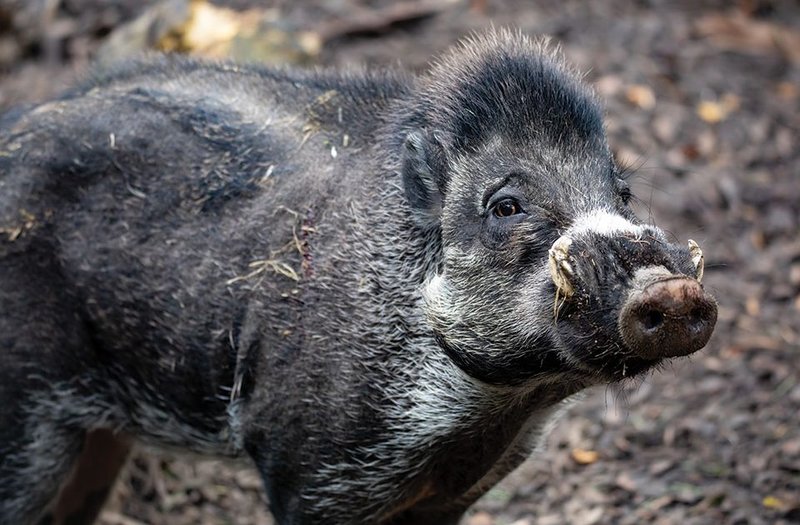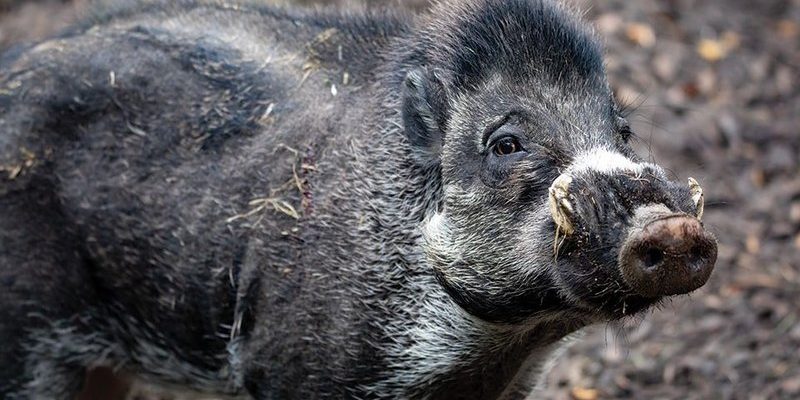
Visayan warty pigs are not just remarkable for their look—characterized by warty bumps on their faces and long, shaggy coats—they’re also super interesting for how they care for their little ones. Watching a mother warty pig with her piglets is like observing a skilled parent at work, balancing play, protection, and teaching. So, let’s explore how these fascinating animals raise their young and what makes their parenting style unique.
Understanding Visayan Warty Pigs
First off, let’s get to know the **Visayan warty pig** a little better. These pigs are medium-sized and typically weigh between 50 to 120 pounds. They have a distinctive appearance with two prominent warts on their faces, which, honestly, give them a bit of a quirky charm. They have dark, coarse fur and a body structure that helps them navigate their forest habitats efficiently.
These pigs are primarily found in the dense tropical forests of the Visayan Islands. Unfortunately, they are classified as critically endangered due to habitat loss and hunting. Their natural habitat plays a crucial role in their life cycle, especially when it comes to raising their young. These pigs thrive in an environment that offers shelter, food sources, and safety from predators—crucial elements for any young animal’s survival.
You might be wondering what sets the Visayan warty pig apart from other wild pigs. Well, their social structure is a big differentiator. They tend to live in matriarchal groups, often led by a female. This social organization influences how they interact with each other and care for their piglets.
Breeding and Gestation
Breeding season for Visayan warty pigs typically occurs throughout the year, although there’s a peak season. When a female (known as a sow) is ready to mate, she’ll attract a male (boar) with various vocalizations and scents. It’s pretty fascinating—nature has its way of signaling readiness. Once mated, the gestation period lasts about 115 days.
Here’s the thing: the sow gives birth to a litter of about two to six piglets. During this time, she requires a safe space to deliver her young, often choosing secluded areas in dense vegetation. This is vital for keeping her vulnerable piglets away from potential predators. Think of it as a mother creating a cozy, secret nursery away from prying eyes.
After giving birth, the mother remains very attentive to her young. She stays close to them, ready to protect them from any danger that might come their way. This is a crucial bonding time, establishing trust between the mother and her piglets.
Mother Pig’s Role
A mother Visayan warty pig plays multiple roles as she raises her piglets. Not only does she provide food, but she also offers a lot of protective instinct. After the piglets are born, the sow nurses them for up to six months, ensuring they get all the nutrients they need to grow strong. You could say it’s a bit like an all-you-can-eat buffet but with a focus on healthy, organic options!
One unique aspect of their behavior is that sows often teach their young how to forage for food. As the piglets grow, the mother leads them on foraging trips, helping them learn what’s safe to eat and where to find it. This education is vital for their survival, as piglets must learn to care for themselves as they become independent.
Additionally, mothers are known to be quite protective. If a threat emerges—like a predator or even a human—she won’t hesitate to put herself between her young and the danger. This fierce protection fosters a sense of security in the piglets, which is critical for their development.
Social Structure and Learning
Social learning is a big part of how Visayan warty pigs raise their young. Piglets don’t just learn from their mother; they observe and imitate older siblings and other adults in their group. This is somewhat similar to how human children learn from their parents and peers. Through play, they develop social skills and understand the group’s dynamics.
As piglets frolic and tumble around, they learn vital survival skills. Roughhousing is not only fun but also helps them establish hierarchies within the group. Watching them play reminds us that learning happens through interaction, and it’s often just as important as formal teaching.
Additionally, older siblings often take on an unofficial mentorship role, helping to keep an eye on the younger ones. This communal approach to raising the young means that each piglet benefits from multiple caregivers, which is a pretty solid strategy for the group as a whole.
Challenges Faced in the Wild
Like many wildlife species, the Visayan warty pig faces several challenges that can affect how they raise their young. Habitat destruction is one of the biggest threats. As forests are cleared for agriculture or urban development, these pigs lose their safe spaces to breed and care for their young.
Predation is another significant risk. Young piglets are particularly vulnerable to large predators, so the sow’s protective behavior is crucial. If a mother is unable to find a safe haven, her piglets may not survive, which impacts future generations.
Climate change also plays a role, affecting food availability and habitat conditions. As environmental factors become more unpredictable, these adaptations are essential for survival. Unfortunately, the cumulative impact of these challenges makes raising young in the wild increasingly difficult for the Visayan warty pig.
Conservation Efforts
Conservation efforts for the Visayan warty pig have ramped up as awareness of their plight has increased. Researchers and wildlife organizations are working tirelessly to protect their remaining habitats and promote breeding programs. Some conservation groups focus on habitat restoration, while others educate local communities on the importance of preserving this unique species.
Captive breeding programs are also in place to help boost their numbers. These programs aim to create a genetically diverse population that can eventually be reintroduced into the wild, hopefully giving future generations of Visayan warty pigs a fighting chance.
Here’s the thing: conservation isn’t just about saving one species; it’s about preserving an entire ecosystem. By protecting the Visayan warty pig, we’re also looking out for the other plants and animals that share their habitat.
The way **Visayan warty pigs raise their young** in the wild is a touching demonstration of nature’s intricacies. These pigs showcase the importance of social bonds, maternal care, and community learning. As they face declining populations due to external threats, it’s vital to remember their role in the ecosystem and the beauty they bring to our world.
By understanding their behaviors and challenges, we can appreciate the efforts being made to ensure a future for these remarkable creatures. Whether through direct conservation efforts or simply sharing knowledge about them, we can all play a part in protecting the Visayan warty pig and the rich biodiversity they represent. After all, every little bit counts when it comes to preserving the wonders of nature.

